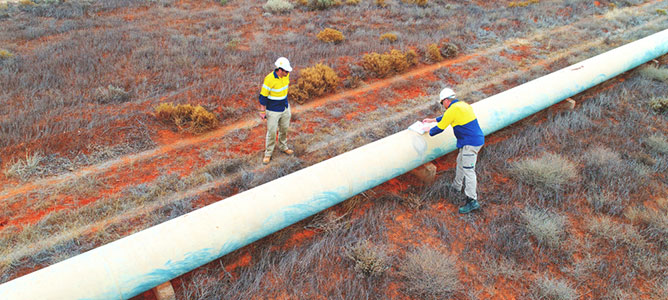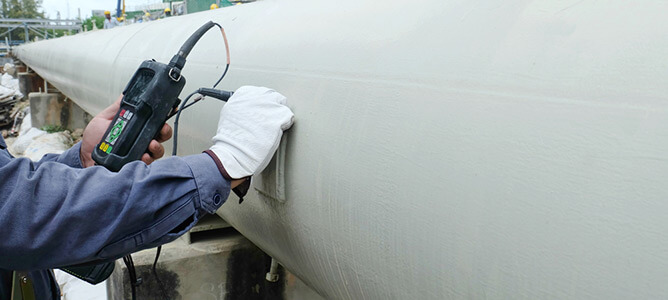
Pipeline Integrity Management? – Planning, Management, & Services
Pipeline networks in the U.S. are some of the most reliable and efficient means for transporting liquid and gaseous products, such as petroleum, natural gas, and biofuels across extensive distances. However, like any other asset, pipelines must be diligently monitored, inspected, and maintained. Pipeline integrity management (PIM) is critical in ensuring the safety and reliability of operating pipelines.
What Is Pipeline Integrity and Why is it Essential?
Pipeline integrity (PI) is the degree to which pipelines and related components are free from defect or damage. Maintaining PI keeps pipelines safe for use throughout their lifecycle (from design to fabrication, pipeline commissioning, pipeline maintenance/repairs, and pipeline decommissioning).
In natural gas and crude oil pipelines, for example, the greatest risk is fire outbreaks or explosions due to leakage and combustion in air, which can lead to loss of lives or damage to property. Gas leaks can also be toxic when inhaled or contribute noxious gases or vapors to the immediate environment.
What Is Pipeline Integrity Management?
Pipeline integrity management (PIM) is a series of efforts aimed at ensuring the integrity of pipelines. Corrosion, for example, can compromise the integrity of pipelines and reduce their lifespan. Thus, preventing it from occurring is critical. PIM allows operators to assess locations on a pipeline that are most vulnerable to corrosion and the time to failure due to the corrosion rate.
PIM falls into three broad categories, as follows:
1. Assessment
Pipeline assessment involves close observation of internal and external sections of pipelines, profile calculation, flow modeling, obtaining the corrosion rate, risk status, and more. Identifying internal and external defects or damage allows professionals to ascertain the condition of pipelines and plan for remediation ahead of failures.
Software tools can assess the corrosion profiles of pipelines and provide inspection and monitoring data in real-time. They can also simulate failure conditions allowing operators to mitigate additional risks. In the master control room located within a pipeline operator’s facility, monitoring can be done using supervisory control and data acquisition (SCADA) systems which gather vital information about pipeline operations and relay data to engineers or technicians if a problem occurs. Surveillance cameras and sensors, fiber-optic cables, and temperature sensors positioned on or close to the pipelines can also check for leaks to prevent hazards.
2. Pipeline Integrity Planning
A pipeline integrity management plan includes all the activities aimed at the maintenance or repair of pipelines, such as defining operations and procedures, inspections, maintenance, pipeline monitoring, and corrosion prevention. Route planning involves an evaluation of the proposed right-of-way and the environmental impact on the immediate environment.
3. Project Management (PM)
PM in pipeline integrity management covers audits for corrosion management, data management, fit for service, burst service, third-party verification, etc.
Pipeline Safety Improvement Act of 2002
The pipeline safety improvement act of 2002 (PSIA-2002) is a joint mandate between the Department of Transportation (DOT), National Institute of Standards and Technology (NIST), and Department of Energy (DOE) to carry out R&D and demonstration and provide standards to ensure the integrity of pipeline installations in the U.S. The 5-year joint program carries out research and development to establish frameworks for regulating pipeline safety across the country.

Objectives of Pipeline Integrity Management
PIM regulations for pipeline integrity companies in the U.S. are found in Title 49 of the Code of Federal Regulations (CFR). Pipelines used for transporting hazardous liquids or gases at high pressures are covered under the same requirements for pipeline safety regulations.
According to PHMSA, Pipeline integrity management has these four basic objectives:
- To improve public confidence in pipeline safety.
- To improve operator management, analytical, and operational processes to manage pipeline integrity.
- To increase the government’s role in the oversight of operator integrity management programs and activities.
- To perform integrity assessments of pipelines in locations where a pipeline leak or failure could have significant adverse consequences (referred to as High Consequence Areas or HCAs).
Components of a Pipeline Integrity Management Plan
An effective pipeline integrity management plan consists of the following:
- Identification of high-consequence areas (HCA). HCAs are locations along the right-of-way of a pipeline that could cause significant loss of lives if an explosion were to occur. Examples include densely-populated human settlements and facilities or areas that would be difficult to evacuate, such as hospitals, prisons, schools, etc.
- Risk assessment and threat identification
- Ensuring regulatory compliance, e.g., the PSIA-2002 which applies to pipelines that transport hazardous gases and liquids
- Pipeline operation risk analysis to identify potential hazards during pipeline operation. Risk analysis ascertains the likelihood that an accident will occur, the potential severity, and effects.
- Pipeline integrity assessments – PI assessments include inline inspection using pipeline pigs, direct assessments, and pressure testing
The NiGen Team Can Provide Comprehensive Pipeline Integrity Support
NiGen provides decades of expertise in pipeline maintenance for clients in the Oil and Gas, petrochemical, and chemical processing industries. Our services include pipeline pigging, pipeline cleaning (nitrogen purging), inspection, and maintenance throughout the life cycle of pipeline installations.
Contact NiGen today to speak to a professional!
